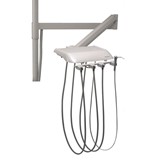Key takeaways
- Track patterns: Identify your no-show rate and the most common cancellation reasons to know where to focus.
- Use reminders: SMS, email, and app notifications reduce missed appointments by up to 39% in Australian healthcare settings.
- Offer flexibility: Online booking with easy rescheduling options encourages patients and clients to commit.
- Strengthen communication: Clear policies, upfront expectations, and follow-up calls help reinforce the value of attending.
- Industries most affected: Industries that rely on time-based services, especially healthcare, dental, beauty, and veterinary practices, face the highest no-show rates in Australia, with impacts ranging from lost revenue to reduced access for other clients.
- Cost of no-shows and cancellations: Missed appointments cost Australian businesses thousands in lost revenue, wasted staff time, and reduced client outcomes, making proactive strategies essential.
- Technology solutions to reduce no-shows: Automated reminders, online booking, and integrated platforms significantly cut missed appointments while simplifying scheduling for staff and clients.
- Best practice cancellation policies: Clear, fair, and well-communicated policies set expectations, protect revenue, and encourage clients to respect appointment commitments.
Introduction
In Australia, missed appointments cost businesses and healthcare providers millions each year in lost revenue, staff downtime, and inefficiencies. In the public health system alone, “Did Not Attend” (DNA) rates average around 6–10% of booked appointments, with some GP and outpatient clinics reporting up to 20% no-show rates (AIHW, 2023). For private practices, beauty clinics, and other appointment-driven industries, cancellations and no-shows are just as disruptive.
Reducing appointment waste isn’t just about protecting revenue, it’s about providing better service, improving patient outcomes, and ensuring efficient use of staff time. The good news is, there are practical strategies you can implement immediately to cut down on missed appointments.
Understanding the cost of no-shows
Before you can reduce no-shows, you need to understand what they cost your business.
- Direct financial loss: Each missed appointment means lost billable hours or wasted machine use (e.g., a laser machine or diagnostic scanner).
- Operational disruption: Staff time, room scheduling, and resources are tied up for no reason.
- Patient/client outcomes: In healthcare, missed visits delay treatment; in beauty, they disrupt client progress and reduce repeat visits.
Case example: A Melbourne physiotherapy clinic calculated that a 12% no-show rate cost them over $120,000 annually in lost revenue. By introducing SMS reminders and online deposits, they halved their DNA rate within six months.
Key reasons why no-shows happen
You can’t solve the problem without addressing the causes. Common reasons in the Australian context include:
- Forgetting the appointment (common across healthcare and beauty)
- Lack of transport or travel barriers (especially in regional areas)
- Cost concerns or financial hardship
- Anxiety or uncertainty about the appointment
- Booking too far in advance (higher risk of cancellation)
- No clear cancellation/rescheduling pathway
Tracking and monitoring no-show patterns
Start by measuring your cancellation and no-show rates consistently.
- KPI to track: Percentage of booked appointments not attended.
- Breakdown by: Day, time, service type, and practitioner.
- Tools to use: Practice management software, clinic dashboards, or even Excel if you’re small.
This baseline allows you to design interventions tailored to your business.
Tip: Many Australian clinics now integrate with Medicare-backed reporting tools or private systems like HotDoc or Cliniko to track trends in real time.
Appointment reminders that work
Automated reminders remain the single most effective tactic for reducing no-shows.
- SMS reminders: Research by the RACGP shows SMS reminders reduce no-shows by 29–39%.
- Email reminders: Good for longer lead-time bookings; include maps, instructions, or preparation tips.
- App notifications: For clinics using patient apps, push notifications are immediate and highly effective.
Best practice: Send at least two reminders, one 48 hours before and one 2–3 hours before the appointment.
Flexible booking and rescheduling
Making it easy for patients and clients to change rather than cancel is critical.
- Online portals: Allow clients to reschedule 24/7 without calling.
- Waitlists: Automatically fill gaps when cancellations occur
- Deposits: Encourage commitment while still being refundable if they reschedule with notice.
Case study: A Brisbane cosmetic clinic introduced online rescheduling and required a $50 booking deposit. Their cancellations dropped by 40% in four months.
Industries most affected by no-shows in Australia
Not all sectors experience no-shows at the same rate. Some industries are more vulnerable due to the nature of their services, reliance on scheduled appointments, or the cost structure of their operations.
Healthcare and allied health
- According to the Royal Australian College of General Practitioners (RACGP), GP no-show rates in Australia average 6–10%, with regional and bulk-billing clinics reporting even higher figures.
- Allied health providers such as physiotherapists, psychologists, and dietitians often face cancellation rates above 15%, particularly in practices with longer treatment times.
- These missed appointments not only disrupt care but also mean other patients miss out on available slots.
Dental practices
- Dentistry is consistently among the highest impacts. The Australian Dental Association notes no-show rates can exceed 20% for routine check-ups.
- Cancellations are often last-minute, leaving clinics with empty chairs that could have been filled from waitlists.
Beauty and cosmetic clinics
- Aesthetic clinics report high no-show rates, especially for elective services such as cosmetic injectables, laser treatments, and skin procedures.
- Because these services are discretionary, clients are more likely to cancel if financial or lifestyle priorities shift.
Veterinary practices
- Pet owners booking routine vaccinations or check-ups often cancel at short notice. Rural vets report higher no-show rates due to travel distances and competing farm commitments.
Professional services
- Beyond healthcare, no-shows are a rising issue for financial advisors, legal consultations, and real estate appointments. While less frequent than in healthcare, they carry a high cost because these sessions often require significant preparation
Cost of no-shows and cancellations
Understanding the financial and operational impact of missed appointments is the first step toward reducing them. No-shows and late cancellations don’t just leave empty chairs, they affect your revenue, staff productivity, and overall business efficiency.
- Financial loss: In Australian healthcare alone, missed GP appointments cost the system over $1 billion annually (RACGP, 2023). Private practices, dental clinics, and allied health providers can lose thousands each month if no-show rates hover around 10–20%.
- Operational disruption: Staff time, rooms, and equipment are allocated but go unused, creating scheduling bottlenecks.
- Client impact: Missed appointments may delay treatment or services, harming client outcomes and satisfaction.
Example: A Melbourne physiotherapy clinic found a 12% no-show rate was costing $120,000 per year. By implementing reminders and online rescheduling, they halved the no-show rate within six months.
By quantifying the cost, you create urgency for implementing strategies to reduce missed appointments.
Technology solutions to reduce no-shows
Modern technology makes tackling no-shows far easier. Automated reminders, online booking, and AI-driven scheduling tools allow you to manage appointments proactively.
- SMS reminders: Studies in Australian clinics show SMS reminders reduce missed appointments by 29–39%.
- Email notifications: Ideal for longer-term bookings or preparatory instructions.
- Patient/client apps: Push notifications can instantly remind clients and allow easy rescheduling.
- Integrated platforms: Systems like HotDoc, Cliniko, MindBody, or SimpleClinic combine booking, reminders, waitlists, and reporting in one dashboard.
Case example: A Brisbane dental clinic introduced automated SMS and online rescheduling. Within four months, cancellations dropped by 40%, freeing up staff time and increasing revenue.
By adopting these tools, you make it easy for clients to commit and reduce the operational burden of manually chasing no-shows.
Best practice cancellation policies
Clear, fair, and well-communicated cancellation policies reduce misunderstandings while protecting your business.
- Set expectations upfront: Share your cancellation rules at booking, in confirmation emails, and in reminder messages.
- Notice periods: Encourage clients to provide at least 24–48 hours’ notice.
- Flexible enforcement: Consider waiving fees for emergencies but maintain rules for repeated last-minute cancellations.
- Deposit options: For high-value or elective services (e.g., cosmetic treatments), a refundable deposit can improve attendance.
- Compliance: Ensure your policy aligns with Australian Consumer Law (ACL) and is communicated transparently.
Example: A Sydney allied health clinic introduced a small late-cancellation fee but waived it for genuine emergencies. Attendance improved, and clients appreciated the fairness and clarity.
Strong policies combined with reminders and flexible booking options create a balanced approach: clients feel respected, and your business avoids unnecessary losses.
Strengthening communication and policies
Clear expectations reduce misunderstandings.
- Cancellation policies: Communicate them upfront at booking, in confirmation emails, and in reminders.
- Positive framing: Emphasise how keeping appointments helps clients achieve their health or beauty goals.
- Follow-up calls: If a client misses without notice, a call can re-engage them and prevent future no-shows.
Technology and automation
Investing in appointment management tools pays off quickly. Popular options in Australia include:
- HotDoc (widely used in healthcare)
- Cliniko (allied health)
- MindBody (beauty and wellness)
- SimpleClinic (naturopathy and complementary health)
These platforms provide integrated reminders, deposits, waitlists, and analytics in one system.
Staff training and culture
Reducing cancellations isn’t just about technology, it’s also about how your staff interact.
- Train front-desk staff to confidently explain policies.
- Encourage practitioners to stress the importance of follow-up appointments.
- Make the process of rebooking simple and supportive.
When stricter measures may be needed
If softer approaches fail, stronger policies may be required.
- Late cancellation fees: Common in Australian physio, psychology, and cosmetic industries.
- Prepaid sessions/packages: Encourages attendance and commitment.
- Membership models: Monthly subscriptions create a financial incentive to attend.
Note: Be careful to remain compliant with Australian Consumer Law (ACL) and ensure cancellation policies are fair and transparent.
Conclusion
Appointment no-shows and cancellations can be a significant drain on your time and revenue. By understanding the drivers behind them and implementing a combination of reminders, flexible systems, strong policies, and supportive staff culture, you can dramatically reduce your missed appointments.
Whether you’re running a GP clinic, physio practice, cosmetic business, or allied health service, these steps can improve efficiency, boost client outcomes, and protect your bottom line.





-160x160-state_article-rel-cat.png)






















